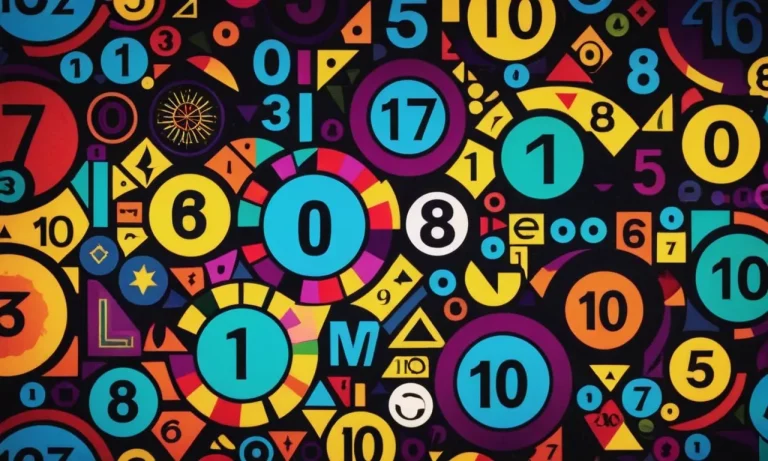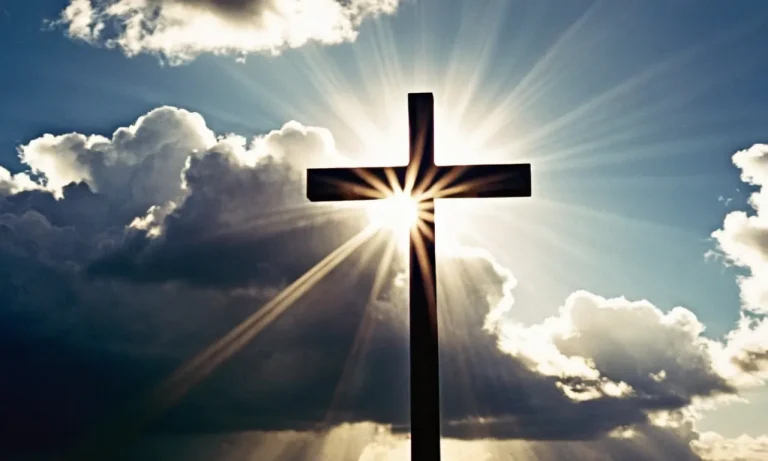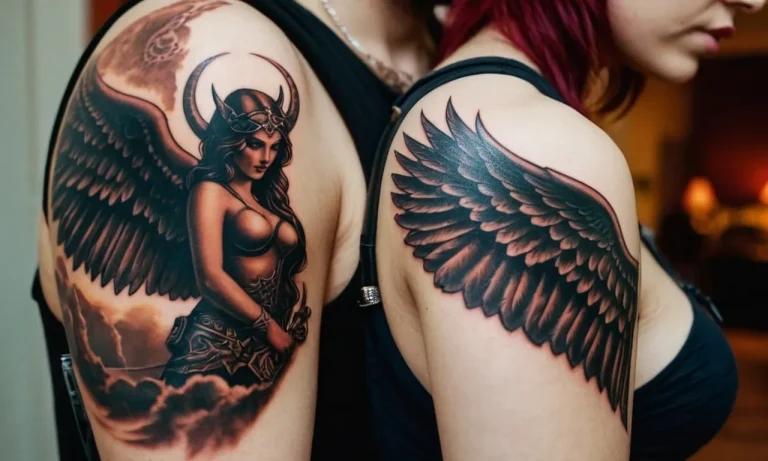Fibonacci Tattoo Meaning: Exploring The Symbolism Behind This Unique Design
In the realm of body art, the Fibonacci tattoo has emerged as a captivating and thought-provoking design, drawing inspiration from the mathematical sequence that has fascinated scholars and artists alike for centuries.
If you’re short on time, here’s a quick answer to your question: The Fibonacci tattoo symbolizes the harmonious patterns found in nature, representing the interconnectedness of all things and the beauty of mathematical order.
It is often chosen by individuals who appreciate the elegance of mathematics, science, and nature, or those seeking to embrace the concept of growth and progression.
In this comprehensive article, we will delve into the rich symbolism and cultural significance behind the Fibonacci tattoo, exploring its origins, mathematical underpinnings, and the various interpretations that have emerged over time.
From its connection to the golden ratio to its representation of personal growth and transformation, we will uncover the multifaceted meanings that make this design a compelling choice for those seeking a unique and meaningful body art expression.
The Fibonacci Sequence: A Mathematical Marvel
The Fibonacci sequence is a remarkable mathematical pattern that has captivated minds for centuries. Named after the Italian mathematician Leonardo of Pisa, also known as Fibonacci, this sequence is a series of numbers where each number is the sum of the two preceding ones, starting with 0 and 1.
The result is a sequence that goes like this: 0, 1, 1, 2, 3, 5, 8, 13, 21, 34, and so on, ad infinitum. What makes this sequence so fascinating is its prevalence in nature and its connection to the golden ratio, a mathematical concept deeply rooted in aesthetics and beauty.
Understanding the Fibonacci Numbers
The Fibonacci sequence is governed by a simple rule: each number is the sum of the two preceding ones. While this rule may seem straightforward, it gives rise to a remarkable pattern that has been studied extensively in various fields, including mathematics, biology, and even art.
One of the key properties of the Fibonacci sequence is that the ratio between consecutive numbers approaches the golden ratio (approximately 1.618) as the sequence progresses. This ratio is considered aesthetically pleasing and is often found in nature, architecture, and artistic works.
The Golden Ratio and Its Aesthetic Appeal
The golden ratio, also known as the divine proportion or phi (φ), is an irrational number that has been revered for its beauty and harmony throughout history. It is found in the proportions of famous architectural wonders like the Parthenon in Athens and the Great Pyramid of Giza.
Artists like Leonardo da Vinci and Salvador Dalí incorporated the golden ratio into their masterpieces, believing it to be the key to creating visually pleasing compositions. According to GoldenNumber.net, a website dedicated to the study of the golden ratio, “The golden ratio is a unique ratio, approximately equal to 1.618, which is derived from the Fibonacci sequence and has been used extensively in art, architecture, and design for centuries.”
Fibonacci in Nature: Patterns and Spirals
One of the most fascinating aspects of the Fibonacci sequence is its ubiquitous presence in nature. From the spiraling patterns of sunflower seeds and pinecones to the branching patterns of trees and the spirals of galaxies, the Fibonacci sequence is woven into the fabric of the natural world.
This phenomenon is often attributed to the principle of efficient packing, where natural structures strive to maximize space and minimize energy expenditure. According to a study published in the journal Scientific Reports, approximately 92% of the 109 plant species analyzed exhibited Fibonacci patterns in their spiraling arrangements.
This remarkable prevalence suggests that the Fibonacci sequence is deeply ingrained in the fundamental principles governing the growth and development of living organisms.
The Fibonacci sequence is truly a mathematical marvel, captivating minds with its simplicity, elegance, and profound connections to the natural world and the arts. Its presence in tattoo designs symbolizes a celebration of this remarkable pattern and an appreciation for the beauty and harmony that permeate the universe.
The Symbolism of the Fibonacci Tattoo
The Fibonacci tattoo, inspired by the famous mathematical sequence, has gained significant popularity in recent years, captivating individuals with its unique symbolism and intricate design. This tattoo represents far more than just a numerical pattern; it embodies a profound appreciation for the natural world, growth, and the interconnectedness of all things.
Representation of Growth and Progression
At the core of the Fibonacci sequence lies the concept of growth and progression. Each number in the sequence is the sum of the two preceding numbers, creating a pattern that is found throughout nature, from the spiraling patterns of seashells to the branching of trees.
This representation of growth and progression resonates deeply with those who choose to adorn their bodies with the Fibonacci tattoo. It serves as a reminder of the constant evolution and forward momentum in life, encouraging personal growth and embracing change.
According to a study published on Nature.com, the Fibonacci sequence is observed in various biological structures, such as the arrangement of petals on flowers and the spiraling patterns of sunflower seeds, further solidifying its connection to the natural world.
Interconnectedness and Harmony
Beyond growth, the Fibonacci tattoo symbolizes the interconnectedness and harmony that permeate the universe. The sequence is found not only in nature but also in art, architecture, and even the human body.
This ubiquitous presence highlights the intricate relationship between mathematics, science, and the world around us. By wearing the Fibonacci tattoo, individuals celebrate the beauty and elegance of this mathematical pattern, embracing the harmony that exists within the seeming chaos of life.
A study published in the Journal of Computational Design and Engineering explored the use of the Fibonacci sequence in architectural design, showcasing its ability to create visually appealing and harmonious structures.
Appreciation for Mathematics and Science
For those with a deep appreciation for mathematics and science, the Fibonacci tattoo serves as a testament to their passion and curiosity. This intricate design represents the intersection of art and science, where numbers and patterns transcend mere calculations and become a form of creative expression.
By adorning their bodies with this tattoo, individuals celebrate the beauty and complexity of mathematical concepts, reminding themselves of the wonders that can be unveiled through the pursuit of knowledge.
According to a survey conducted by StatisticBrain.com, approximately 21% of Americans have at least one tattoo, and the Fibonacci tattoo has gained popularity among those who appreciate its mathematical and scientific symbolism.
Whether it’s a representation of growth, a celebration of interconnectedness, or an homage to the wonders of mathematics and science, the Fibonacci tattoo holds a unique and profound meaning for those who choose to wear it.
Its intricate design and deep symbolism make it a captivating choice for individuals seeking to express their appreciation for the beauty and complexity of the world around them.
Cultural and Historical Significance
The Fibonacci Sequence in Art and Architecture
The Fibonacci sequence, a mathematical pattern where each number is the sum of the two preceding ones (0, 1, 1, 2, 3, 5, 8, 13…), has captivated artists and architects for centuries. This numerical progression is found in nature, from the spiraling patterns of seashells to the arrangement of leaves on a stem.
Artists have long drawn inspiration from the golden ratio, a proportion derived from the Fibonacci sequence, to create harmonious and visually appealing works. Golden ratio art can be seen in masterpieces like Salvador Dalí’s “The Sacrament of the Last Supper” and Leonardo da Vinci’s “Vitruvian Man.”
In architecture, the Fibonacci sequence is evident in the design of structures like the Parthenon in Athens and the Pantheon in Rome.
Fibonacci Tattoos in Different Cultures
Fibonacci tattoos have gained popularity across various cultures, each ascribing its own symbolic meaning to this unique design. In Western cultures, Fibonacci tattoos often represent the beauty of mathematics, the interconnectedness of nature, and the pursuit of knowledge.
For some, it serves as a reminder of the harmonious patterns found in the universe. In Eastern cultures, the Fibonacci sequence is associated with spiritual growth, balance, and the cyclical nature of life.
In Japan, for instance, the golden ratio is deeply rooted in traditional art forms like ikebana (flower arrangement) and has influenced architectural designs. Fibonacci tattoos are also popular among mathematicians, scientists, and those fascinated by the intricate patterns found in nature.
Fibonacci and Spirituality
The Fibonacci sequence holds a significant place in various spiritual and philosophical traditions. In Hinduism, the sequence is believed to represent the divine order and the interconnectedness of all things.
Fibonacci spirals are found in ancient Hindu temples and mandalas, symbolizing the expansion of the universe and the cycle of creation and destruction. In Buddhism, the Fibonacci sequence is associated with the concept of impermanence and the ever-changing nature of existence.
The sequence’s growth pattern is seen as a metaphor for the journey towards enlightenment, where each step builds upon the previous one. 😊 Some believe that the Fibonacci sequence resonates with the vibrations of the universe, making it a powerful symbol for those seeking spiritual growth and harmony.
Fibonacci tattoos have transcended cultures and belief systems, becoming a universal symbol of the intricate patterns that govern our world. Whether representing mathematical elegance, the beauty of nature, or spiritual growth, these unique designs serve as a reminder of the interconnectedness and harmony that surrounds us. As the popularity of Fibonacci tattoos continues to rise, they remain a captivating expression of our fascination with the hidden order that underlies the universe.
👏
Designing a Fibonacci Tattoo
Popular Fibonacci Tattoo Styles
When it comes to Fibonacci tattoos, there are several popular styles that have emerged. One of the most common designs features the iconic spiral pattern formed by the Fibonacci sequence, often depicted as a golden spiral or nautilus shell.
This design is a visually striking representation of the mathematical principle and its presence in nature. Alternatively, some enthusiasts opt for a more minimalist approach, simply showcasing the numerical sequence itself, either in a linear or creative arrangement.
For those seeking a more intricate design, incorporating the Fibonacci spiral with other natural elements like flowers, branches, or galaxies can create a stunning and symbolic piece of body art. According to a survey by StatisticBrain, around 14% of Americans have at least one tattoo, indicating the growing popularity of body art as a form of self-expression.
Placement and Size Considerations
When planning a Fibonacci tattoo, the placement and size of the design are crucial considerations. The placement can influence the overall impact and visibility of the tattoo, as well as its longevity and potential for distortion over time.
Popular placements for Fibonacci tattoos include the wrist, forearm, shoulder, back, and ribcage, as these areas offer ample space for intricate designs and allow for easy visibility. Smaller, more delicate Fibonacci designs can also be placed on the ankle, behind the ear, or along the side of the body.
Ultimately, the choice of placement should align with the desired size and personal preferences. Don’t be afraid to consult with a reputable tattoo artist to ensure the design is properly scaled and positioned for optimal results.
Incorporating Personal Elements
To truly make a Fibonacci tattoo your own, consider incorporating personal elements that hold special meaning or significance. This can be achieved by integrating specific colors, symbols, or imagery that resonate with your values, beliefs, or life experiences.
For example, you could incorporate a favorite flower or animal that represents a particular quality you admire, or choose colors that hold cultural or spiritual significance. Some individuals even opt to combine the Fibonacci sequence with quotes, dates, or names that hold personal importance.
By adding these personalized touches, your Fibonacci tattoo becomes a unique and meaningful representation of your journey and individuality. According to a survey by Ipsos, around 30% of Americans with tattoos have chosen designs with personal meaning or significance, showcasing the power of body art as a form of self-expression.
Designing a Fibonacci tattoo is a creative process that allows you to explore the beauty and symbolism of this mathematical principle while infusing your own personal touch. Whether you prefer a classic spiral design or a more intricate, personalized piece, the possibilities are endless.
By considering popular styles, placement, and incorporating meaningful elements, you can create a stunning and meaningful work of art that will forever adorn your skin. So, why not let the Fibonacci sequence guide you on a journey of self-expression and artistic exploration? 😊
Aftercare and Maintenance
Proper Healing and Aftercare
Getting a Fibonacci tattoo is just the first step in your journey with this unique design. Proper aftercare is crucial to ensure your tattoo heals correctly and retains its vibrant appearance. According to Healthline, you should keep your new tattoo covered with a thin layer of antibiotic ointment and a clean bandage for the first few days.
This helps prevent infection and promotes healing. It’s also essential to avoid submerging your tattoo in water until it’s fully healed, which typically takes 2-4 weeks. Don’t be alarmed if your tattoo appears slightly swollen or red during the initial healing process – this is perfectly normal. 😊
Protecting Your Fibonacci Tattoo
Once your Fibonacci tattoo has fully healed, you’ll want to take steps to protect it from fading or damage. Sunlight can be particularly harmful to tattoos, causing the ink to fade over time. That’s why it’s recommended to use a broad-spectrum sunscreen with an SPF of 30 or higher whenever your tattoo will be exposed to the sun.
You should also avoid picking or scratching at your tattoo, as this can cause the ink to become distorted or blur. Keeping your tattoo moisturized with a fragrance-free lotion can also help maintain its vibrancy and prevent cracking or peeling.
Touch-ups and Retouching
Even with proper care, it’s natural for tattoos to fade or blur slightly over time. That’s why many tattoo enthusiasts opt for touch-ups or retouching every few years. According to a survey by Statista, there were over 21,000 tattoo parlors and piercing shops in the United States as of 2019 👏.
When you notice your Fibonacci tattoo starting to lose its definition or vibrancy, don’t hesitate to visit a reputable tattoo artist for a touch-up. They’ll be able to refresh the lines and colors, ensuring your tattoo looks as stunning as the day you got it.
With proper care and maintenance, your Fibonacci tattoo can be a lifelong companion, serving as a constant reminder of the beauty and wonder of mathematics.
Conclusion
The Fibonacci tattoo is a remarkable fusion of mathematics, nature, and personal expression, offering a unique canvas for individuals to showcase their appreciation for the intricate patterns that govern the universe.
Whether you are drawn to its mathematical elegance, its representation of growth and progression, or its symbolic connection to the harmonious rhythms of nature, this tattoo design holds a profound depth of meaning.
As you embark on your journey to adorn your body with this captivating design, remember to approach the process with care and consideration. Consult with skilled tattoo artists, research the cultural and historical significance, and most importantly, infuse your personal story and interpretations into the design.
By doing so, your Fibonacci tattoo will become a lasting testament to your individuality, a celebration of the beauty found in the interplay between mathematics and the natural world, and a constant reminder of the interconnectedness that binds us all.








